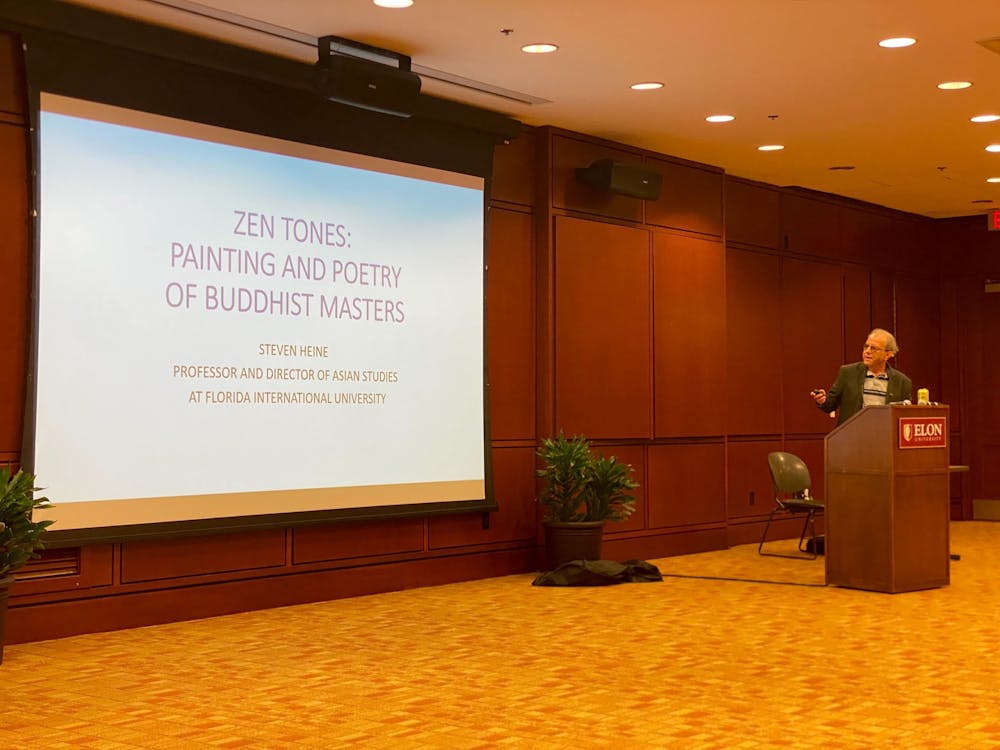Steven Heine, Florida International University professor of religious studies, spoke at Elon University’s Koury Business Center Wednesday evening about traditional Chinese and Japanese art forms, specifically Zen tones.
Zen tones, Heine said, are typically seen as just ink figures blotched on top of the artwork. But it is more than ink on paper, Heine said; it’s poetry, and the spirit of the painting combines with poetry to represent certain themes.
“You're getting across the spiritual symbolism and significance of the drawing, often of nature that symbolizes the inner spirit of Zen Buddhist awareness and the striving for enlightenment,” Heine said.
Many paintings depict nature, a theme that can coincide with other themes, such as life and death. Heine said life and death are commonly painted with an understanding of how and why things happen while nature is watching.
As part of nature, Heine said the moon is always a prominent figure within certain Japanese art. The moon is a symbolic figure of the Buddha nature — or how there is oneness in all things — Heine said the moon still shines even under the serious circumstance of death.
Tone can have more than one meaning, Heine said, describing it as “sound quality,” something almost too complex to understand. The sound can confuse those trying to translate the poetry.
Other than Zen tones, Heine said during the times he was in China and Japan, he noticed a difference in artistic taste between the countries. For example, during the classical age of art, “going back 1,000 years or so,” the Japanese had moved to a modern approach of composition while the Chinese had preferred their conventional art.
“One of the ingenious things that happened in the classical period was what's called the triptych, where they put three paintings together,” said Heine. “They were more popular in Japan than in China.”
Heine said well-known artists like Vincent van Gogh were influenced by Japanese art. In fact, Van Gogh was “pretentious” about the art style, even wanting to paint in that style.
“He spent several years obsessed and trying to imitate Japanese paintings in the 1880s before he died,” Heine said. “Part of the reason he committed suicide was because he could never do as good as the Japanese painters did.”


